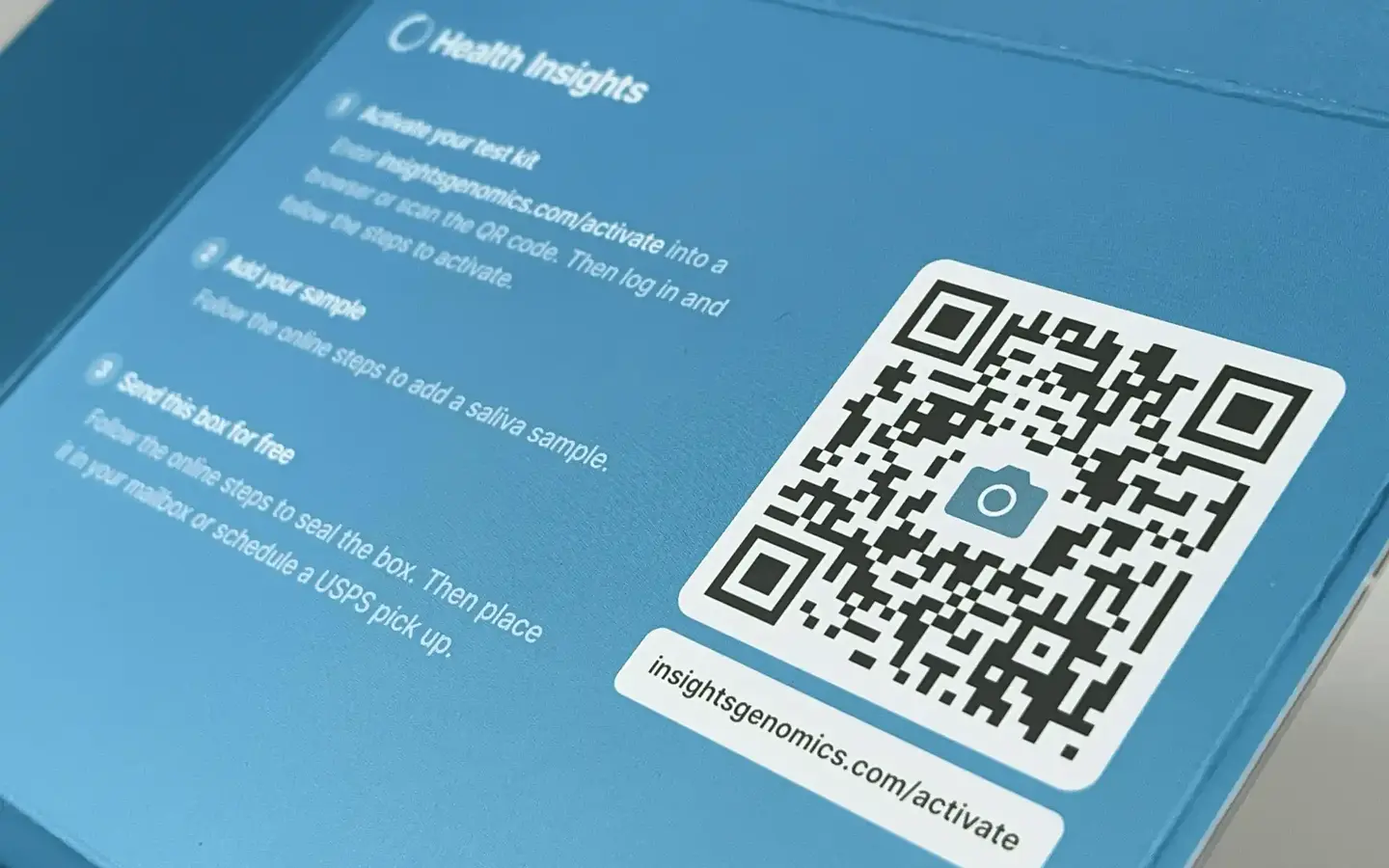Summary
I redesigned Health Insights’ genetic test kit and created new online instructions to cut sample rejections as part of a scale-up. The reject rate dropped 9.7 percentage points to 0.3%, saving about $3,880 per 1,000 kits and protecting patient trust. This reduced repeat collections for patients and shortened time to result.
Problem
- In late 2022, Genomics invited 3,000 MassMutual policyholders to a free-benefit genetic test service. 1,620 enrolled over a few months with 1,367 returning a kit. The lab rejected 10% (about 137) for invalid samples.
- Those patients received no result, waited roughly a week for a replacement kit, collected another sample, and posted it back. Support handled reships and explanations.
- Each rejection consumed about $40 in kit cost plus shipping and support time. At scale, repeat kits and delays would erode patient and customer trust and make growth unviable.
What I did
Found root causes with the lab to target fixes
- 5% didn’t have patient date of birth written on the sample device necessary to match the kit with the patient.
- 5% had unusable or missing samples.
- A patient survey showed many felt the instructions were complex.

Consider rewriting the instructions, they were tricky
Patient, September 2022
Linked kits to patients with activation codes to stop ID errors
I ran a cross-functional ideation workshop with product, engineering, supply and regulatory teams, settling on a high-effort high-value solution for maximum return at scale.
- Patient enters a 5-digit activation code online instead of writing date of birth on the device. This speeds setup, removes handwriting errors, and enables real-time validation.
- The system validates the code against our database and links the kit to the patient, so the lab identifies the sample on receipt.
- With a valid code, patients follow step-by-step online instructions to collect and return the sample.
- With an invalid code, the system blocks progress and offers fixes (recheck, find code, contact support). The system requires activation for every kit, addressing the unidentifiable 5% by forcing identification.

Redirected patients online via kit design to reduce paper-first mistakes
- I overhauled the kit to align with Genomics’ new Health Insights brand identity, meeting patient expectations and fostering trust in the kit.
- DNAGenotek supplied the sample device inside the kit which included the paper instructions. Regulations prevented removal.
- To mitigate the risk of paper-instruction use and skipping activation altogether, I added a prominent QR code and additional prompts that directed patients online instead.
- Analytics showed that 65% of the policyholders who enrolled were mobile users, so I prioritised a mobile experience while supporting desktop-use likely preferred by older patients.


Built step-by-step instructions to lower collection errors
To address unusable or missing samples, I designed progressively disclosed online instructions with one or two actions per page with simplified language.
- These responded to browser preferences such as larger text for individual accessibility and were fully keyboard-focusable.
- I included DNAGenotek’s illustrations as a quick way to enhance comprehension.

Tested under constraints to surface risks quickly
DNAGenotek couldn’t supply extra sample devices in time for US patient testing, so I tested in-person with 5 new UK colleagues unfamiliar with the kit to identify any major issues and maintain momentum.
Key kit findings:
- 3/5 read the paper instructions before noticing the QR.
- Several questioned who DNAGenotek was and raised privacy concerns.
- Some wanted a simple overview of the sampling process upfront.
Key instructions findings:
- Some confused whether a page referred to the kit box or the sample device box.
- All reported the online instructions were easy to use.
Iterated kit and copy to address privacy and box confusion
To address paper-first behaviour and set patient expectations, I pushed the supply chain team to invest in printing on the large inside panel of the kit (about $0.40 or $400 per 1000 kits). I then designed an eye-catching set of steps with the QR alongside.


With the QR moved to the inside panel, I used the freed up space below the sample device for supporting signposts. To address the partnership with DNAGenotek and relevant privacy concerns, I added content that explained the partnership and stated they do not receive patient personal data or samples both on the kit and in the online journey.


Navigated regulatory limits while keeping guidance clear
- To further reduce the risk of paper-first behaviour, in the online instructions I added a first-page callout advising patients to ignore the paper version. Regulatory rules required softer wording to prevent CLIA non-compliance; as a compromise, I asked patients to refer to them only if they need to.
- DNAGenotek’s illustrations were off-limits, so I designed custom ones which made the experience more cohesive.

Confirmed improvements in a US dry run before rollout
A virtual usability test with 5 US colleagues showed no major threats - none referred to the paper instructions and all found the online ones clear.
Results
- Patients returned 518 kits in January 2024. Reject rate fell to 0.3% from 10% (down 9.7 percentage points), saving about $2,000 in kit costs that month. This is a normalised saving of about $3,880 per 1,000 kits on kit costs alone; excludes shipping and support time costs.
- Freed lab capacity for process improvement, reduced reships and support contacts, and strengthened customer confidence.
- Maintained customer trust and increased appeal to new ones by lowering cost per completed test and shortening time to result, improving patient experience and de-risking scale-up.
- Step-by-step online instructions approach performed so well my colleague adopted it for the sign-up flow.
Final designs:













 ← Home
← Home